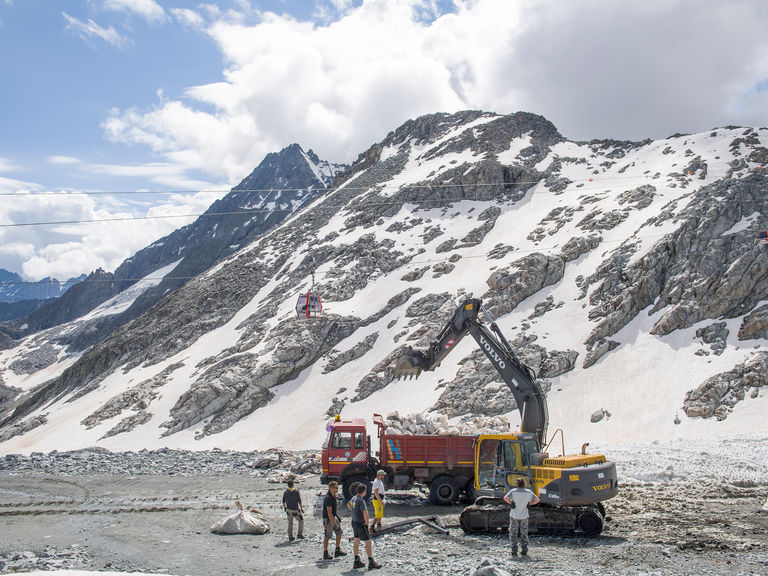Project Detail: A blanket for the Presena glacier
Contest:
Reportage and Documentary 2020
Brand:
LuganoPhotoDays
Author:
Michele Lapini
Project Info
A blanket for the Presena glacier
Since 2008, a part of the snowpack on the top of the Presena mountain is covered at the beginning of summer with geotextile sheets to prevent ice melting. Global warming is threatening glacier life and related activities
Since 2008, a part of the snowpack on the top of the Presena mountain is covered at the beginning of summer with geotextile sheets to prevent ice melting.
The project has a dual function: on one hand, it provides a barrier to sunlight in order to keep the glacier alive thus reducing ice melting; on the other hand, it ensures the economic continuity of the ski station during winter season.
It is estimated that since 1990 the glacier has been retreating at a rate of about 10 meters per year. From 1993 to 2003 the Province of Trento has estimated that the surface area of Presena has reduced by about 40%, from 68 hectares to 41. At the beginning of autumn, the geotextile sheets are removed while waiting for the first snowfalls. The covering operation is estimated to reduce the melting of the ice by about 2/3, thus saving almost 2.5 meters of snow for a total of 400,000 cubic meters. Nevertheless, the glacier is slowly losing ground and the change is extremely visible by looking at the photographs of a few years ago.
This initiative was launched thanks to the collaboration between the public and the private sectors and it saw the university of Milan and Trento on one side and the company holding the sky station named Carosello. The cost of the operation is around 500,000 euros per year that the Carosello Company invests in order to guarantee the operation of the facilities for winter tourism. The Presena glacier is located on the border between Lombardy and Trentino Alto Adige regions of northern Italy and at the top it reaches 3,000 meters.
The images were taken during the closing phase of the cover (02th July 2020) and during the removal of the geotextile sheets (7/8th September 2020).


















